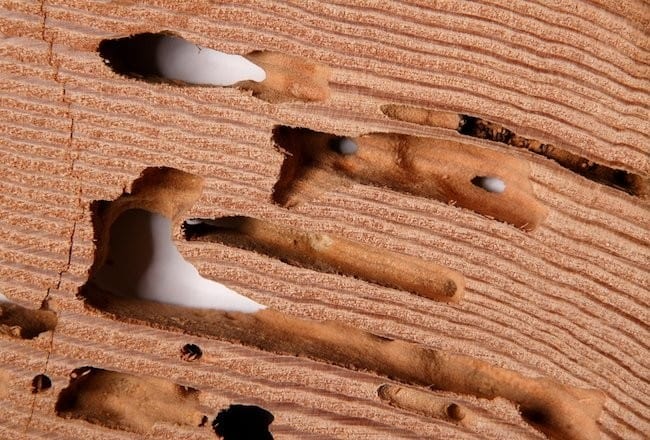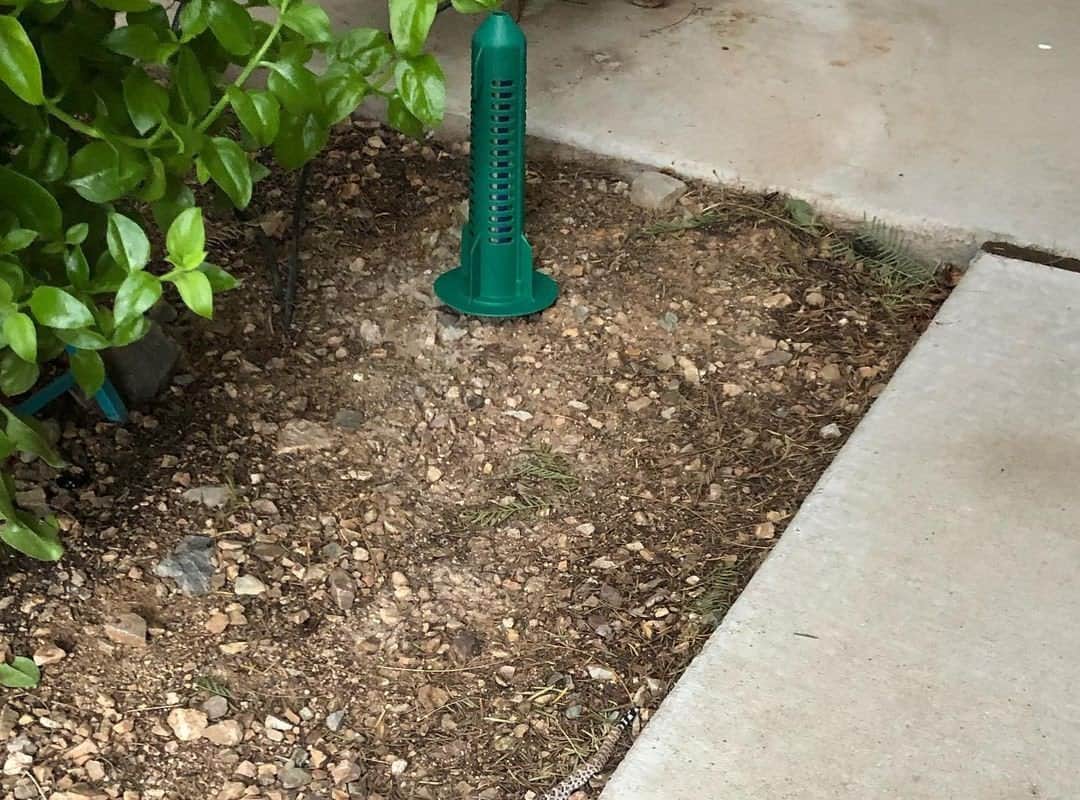Even if you did not have this problem, you have probably heard about termites and what they can do to houses. That is why you and every reader here need to know how to get rid of drywood termites.
They are not like other pests that harm only humans and cause some inconvenience pretty often. Termites are terminators of everything that contain cellulose.
I prepared this article to provide you with all the required information to protect your home from these pests and prevent the infestation. It is better to know your potential enemy. But also, I collected the info about some effective approaches and solutions.
[wpsm_titlebox title=”How to Get Rid of Drywood Termites” style=”main”]
- Locate the infested areas.
- If there are a lot of termites, seek professional advice.
- Prepare your home for dry wood termite treatment.
- Use barrier drywood termite treatment.
- Apply baits for termites.
- Choose the type of treatment for dry wood from termites.
- Prevent reinfection.
[/wpsm_titlebox]
What You Need to Know About Termites
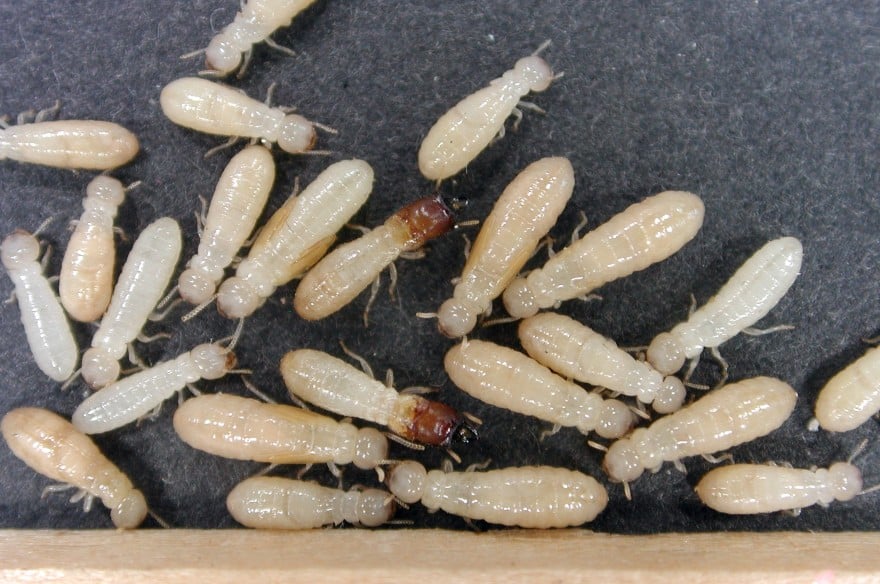
To choose the right treatment and know what to do in case of infestation, you need to learn some facts about these insects: what they are, what they do, and what they are afraid of. Let’s move forward to find the answers.
What Are Drywood Termites: Full Profile
Drywood termites are the type of termites, who destroy wooden floors, furniture, building skeleton, and other pieces of dry wood (so you can see the origin of their name). They live in colonies that consist of members with different roles: swarmers, workers, soldiers, and reproductives.
Swarmers’ main duty is to create new colonies. They are about half-inch-long with two pairs of equal winds and reddish bodies. They are usually signals of house infestation. Workers are grey-colored, 3/8-inch-long insects without wings, they are the ones who destroy the building by eating wood.
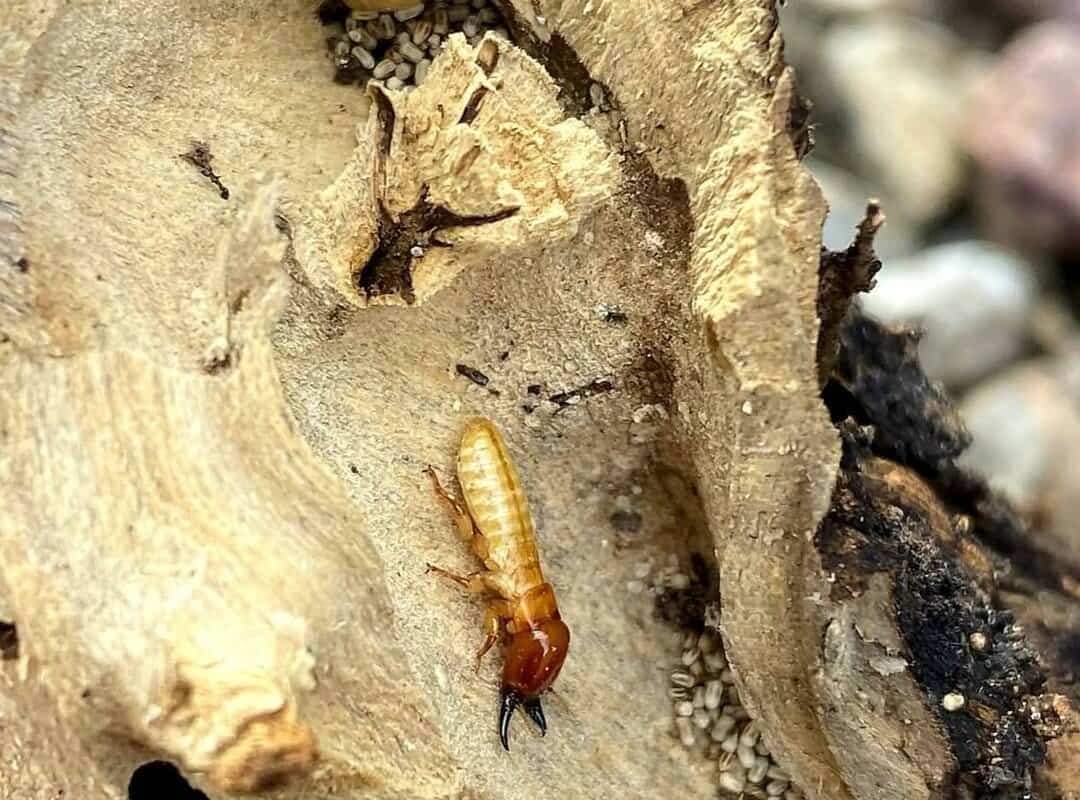
They are the majority of the colonies. Soldiers are usually of a quarter-inch size, with grey bodies and orange heads. Their responsibility is to protect the colony. And finally, reproductives, which are known as the king and the queen.
They are responsible for the reproduction cycle of the colony and can live for decades. The king is about half-inch-long, and the queen can grow up to the inch-long size.
Also, there is another reason it is important to know the answer for: what are drywood termites? They are often confused with flying ants. But you have to know the difference, and here is how to tell it:
- Termites have straight antennae, while ants have bent ones;
- Termites’ wings are of the same size, while ants’ ones are different;
- Termites have a straight waist, while ants’ waists are pinched.
Both species live in colonies and can be found in houses. However, ants do not cause structural damage like termites. Also, they have different food habits. Ants eat seeds, nectar, or other insects, but the main nutrient for termites is cellulose.
How Termites Get into Houses and Why They Are Dangerous?
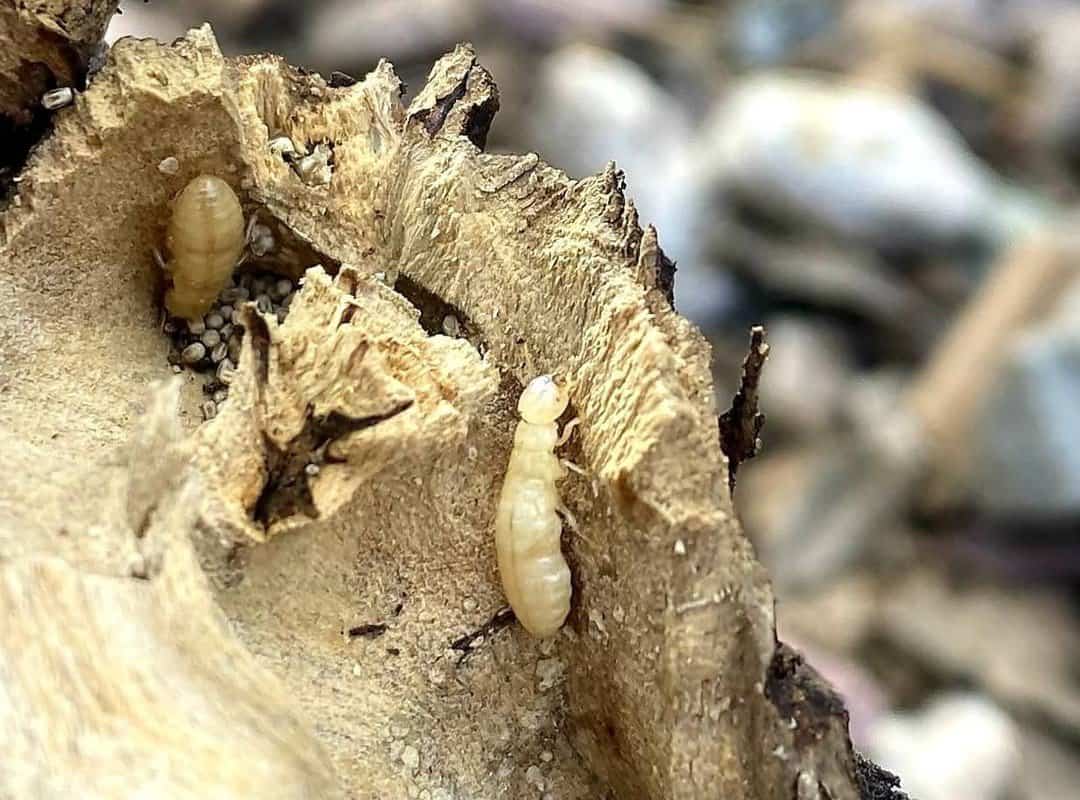
Termites are attracted to moisture and sources of cellulose. Their favorite habitat became human buildings made of wood, which led to tremendous drywood termite damage. The source of these pests can be wooden mulch, bad drainage, close firewood storage, and other wrong approaches to the building planning.
It is obvious why they are dangerous. They can eat wooden house parts from the inside, making it weak and unstable, eventually leading to the collapse of the building. But they also can bring harm to human health. Soldiers can bite people and cause an allergic reaction.
Touching frass can cause contact dermatitis. Mold spores, which can be resulted by the termite activity, cause various symptoms like headaches, cough, and sore throat, eyes burning feelings, and running nose, as well as general weakness.
How to Detect Drywood Termite Infestation?
One of the greatest difficulties of the drywood termite infestation is that it is hard to detect until you see serious damage. These insects work undercover, eating the wood from the inside so they cannot notice them. However, some signs can help you in detecting the infestation:
- Flying insects around the wooden areas (not flying ants);
- Shed wings, as termites usually leave them in piles;
- Termite droppings in the form of hexagonal wooden-like pellets;
- Hollow wood that is probably eaten from the inside;
- Swollen floors and peeling paint signal about termites that brought moisture to their habitat. Make sure water leaks or other moisture sources do not cause this.
How to Get Rid of Drywood Termites: Step-by-Step Guide
As soon as the infestation is detected, you have to take measures against termites. Here’s what you need to do:
- Locate the infested areas. Define whether the entire house is infested or there are some zones that you can isolate from the building.
- Contact an infester. An average homeowner cannot properly define the level of infestation and choose the right treatment. I strongly recommend you seek professional consultation. If the infestation is small, some simple methods can be applied. In serious cases, you have to hire professional exterminators.
- Use barrier drywood termite treatment. This method helps isolate the infested area and protect your home from the inside pests.
- Apply baits for termites. Another preventative and protective method is applying baits. Just stick them in the ground, and it will attract termites, poison the colony and kill it eventually.
- Prevent re-infestation. These measures include removing wooden constructions that are contacting the ground, redirecting the rainwater from the foundation, using gravel instead of mulch.
How to Prepare the House for Drywood Termite Treatment
When the infestation case is bad, there is no other option than fumigation, which is a drastic measure to kill pests. But it is also dangerous to humans, so you have to prepare you home before it:
- Find a place to stay for 2-3 nights;
- Leave the doors between rooms open;
- Remove or seal any consumable products;
- Take care of the plants near the house;
- Provide access to your home for fumigators;
- Follow the fumigator’s instructions considering returning home.
What Are the Main Types of Drywood Termite Treatment?
Now let’s talk about how to treat drywood termites. Five basic methods can be used in case of different levels of infestation:
- Liquid barrier. Usually, this is a treatment in the form of termite spray with Fipronil as an active ingredient. It is sprayed around the house to prevent the infestation.
- Poisoned baits. They attract termites, and they bring the poison to the colony. Termite baits consist of cellulose mixed with slow-acting insecticide.
- Direct chemical disinfestation. In case you detect termites inside your home and do not want to spray insecticides inside, you can treat this infestation with special foam. You can fill the cracks and crevices with it, and the chemicals in this foam will kill termites.
- Boric acid. It can be used separately or as a part of a combined treatment. Boric acid affects insects’ metabolism and digestion, which eventually leads to their death.
- Natural impact. It includes using nematodes (microscopic roundworms), which eat insects, but are safe for humans, or applying diatomaceous earth (fossilized remains of aquatic organisms), which ruins the termites’ skeletons.
Top 4 Drywood Termite Treatments: Choose Your Best
As usual, I’ve tested some popular treatments against pests. Now I’m ready to share some reviews with you to help find the most suitable option.
1. Effective Termite Spray for Wood: Taurus SC Termiticide/Insecticide
[amazon box=”B0058DH4R6″ template=”vertical” tracking_id=”how-to-get-rid-of-drywood-termites-20″]
Taurus SC Termiticide/Insecticide is a concentrated termite spray for wood, so one bottle can be enough to treat the perimeter. It is allowed only for outside use. This spray is effective against the entire termite colony and has a long-lasting effect. Also, it kills other pests that can be a threat to your house.
To me, this is the best insecticide against termites, as I’ve tested its effectiveness. Despite its toxic components, it is safe if you use it right. So follow the instructions considering diluting and applying.
| Pros: | Cons: |
|
|
2. Natural Solution for Termite Infested Wood: Bora-Care
[amazon box=”B01HDYAOY2″ template=”vertical” tracking_id=”how-to-get-rid-of-drywood-termites-20″ button_text=”Check price on Amazon” button_detail=”https://shareasale.com/r.cfm?b=410159&u=2583381&m=43235&urllink=www%2Edomyown%2Ecom%2Fboracare%2Dp%2D100%2Ehtml&afftrack=how%20to%20get%20rid%20of%20drywood%20termites” button_detail_text=”Check price on DoMyOwn”]
Specifications:
- Active Ingredients: Boron Sodium Oxide (B8Na2O13), Tetrahydrate (12280-03-4) 40%
- Item Weight: 11 Pounds
- Material:
- Product Dimensions LxWxH: 7.3 x 4.85 x 10.1 inches
- Target Species: Wood Destroying Fungus, Termite and Wood-Destroying Insects Such As Termites, Carpenter Ants, Powderpost Beetles, etc.
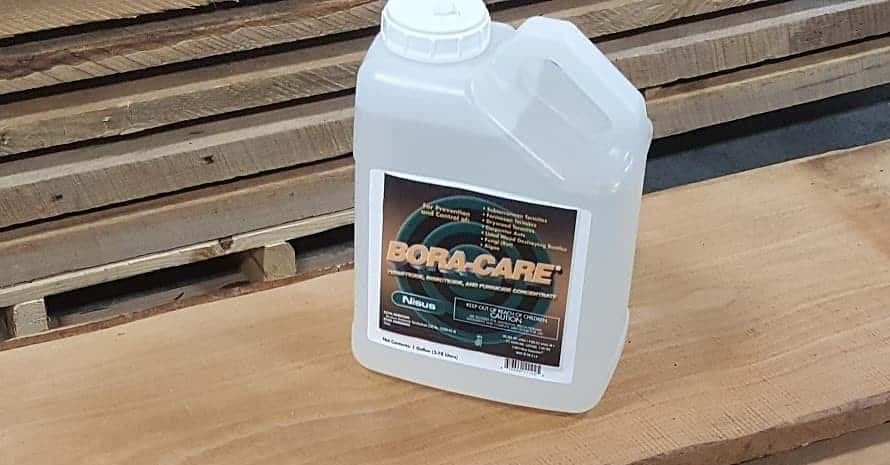
Speaking of my natural pick, I would recommend Bora-Care by Nisus. Its main ingredient is borate salt that ensures long-lasting effect and repelling action against termites. As soon as you treat termite infested wood with this product, it reaches the termite area.
Insects start eating the treated wood and get poisoned. Bora-Care also has a contagious effect and reaches the colony. Moreover, it is effective not only against drywood termites, but also, subterranean and Formosan termites, and some other insects.
But according to some testimonials, this solution cannot be used on wooden objects that you want to paint as the paint will bubble.
| Pros: | Cons: |
|
|
3. Preventing Drywood Termite Damage: Premise Foam
[amazon box=”B003BWS8TO” template=”vertical” button_text=”Check price on Amazon” button_detail=”https://shareasale.com/r.cfm?b=1724849&u=2583381&m=107474&urllink=diypestcontrol%2Ecom%2Fpremise%2Dfoam%2Dtermites&afftrack=how%20to%20get%20rid%20of%20drywood%20termites” button_detail_text=”Check price on DIY Pest Control”]
Specifications:
- Active Ingredient: Imidacloprid 0.05%
- Item Weight: 1.35 pounds
- Item Form: Foam
- Product Dimensions LxWxH: 9.25 x 2.25 x 2.5 inches
- Target Species: Subterranean and Drywood Termites, Ants, and other wood-destroying insects
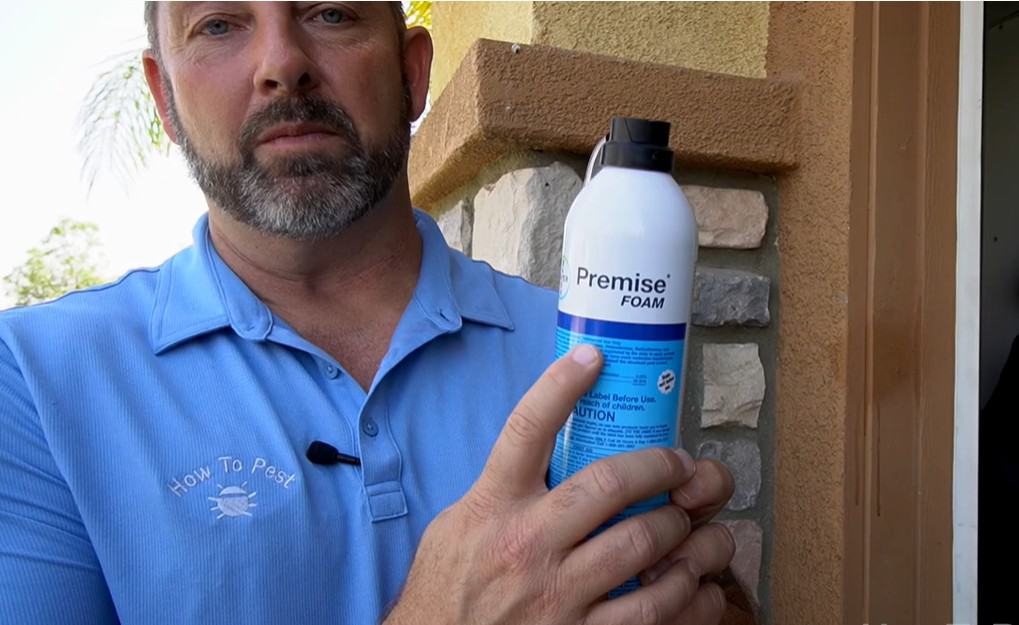
You can use Premise Foam solution for filling up empty spaces that can serve as an entrance to the termites and other insects. The foam expands 30 times and reaches the deepest holes and crevices. As soon as it is dry, the product is safe for people and pets. The ready-to-apply formula makes it easy to use this solution.
This product is used as a preventive measure, but it can also kill insects, releasing the poison inside the wooden structures. Termiticide acts for several days and kills all insects that contact the foam. Then they spread the poison throughout the colony. But this foam does not repel insects.
| Pros: | Cons: |
|
|
4. Treat Drywood Termite Infestation: Termidor Foam
[amazon box=”B07QWMJ7JM” template=”vertical” tracking_id=”how-to-get-rid-of-drywood-termites-20″ button_text=”Check price on Amazon” button_detail=”https://shareasale.com/r.cfm?b=410159&u=2583381&m=43235&urllink=www%2Edomyown%2Ecom%2Ftermidor%2Dfoam%2Dp%2D3528%2Ehtml&afftrack=how%20to%20get%20rid%20of%20drywood%20termites” button_detail_text=”Check price on DoMyOwn”]
Specifications:
- Active Ingredient: Fipronil (0.005%)
- Item Weight: 1.52 pounds
- Item Form: Foam
- Product Dimensions LxWxH: 2.5 x 2.5 x 9.5 inches
- Target Species: Ants, Termites, Wood Destroying Insects, Termites (including subterranean, drywood, dampwood and arboreal), Old House Borer Beetles, Powder Post Beetles, Wharf Borer Beetles, Ants (including: foraging Carpenter; excluding: Fire, Harvester, Leaf cutter and Pharaoh)
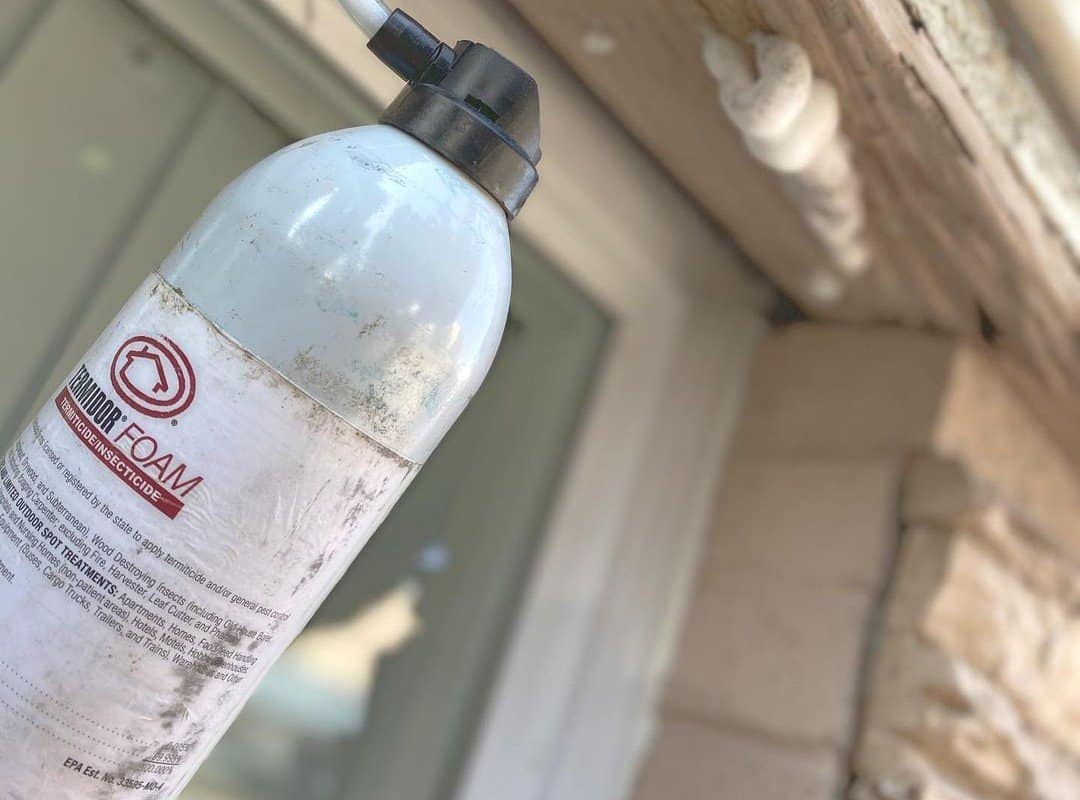
Termidor Foam is applied to the holes, cracks, and other voids on the termite infested wood. With Fipronil as an active ingredient, it kills termites and ants, spreading the insecticide and filling in their nests.
This product is claimed to have an undetectable feature, so termites cannot realize that they contact and eat the poisoned material. Foam is often used in professional insect treatments.
Termidor Foam is easy to apply inside the wooden structures. However, it will not have the required effect on the open wooden areas.
| Pros: | Cons: |
|
|
How to Eliminate Cases of Infestation in the Future?
After getting rid of insects eventually, you need to learn how to prevent drywood termites in the future. You need to remember this set of actions:
- Apply preventive pest control during swarming seasons;
- Move wood debris and mulch at least 20 feet from the building;
- Avoid raising humidity inside your house;
- Seal holes and crevices to close access for insects;
- Invite a professional infester to do regular checks.
Frequently Asked Questions about Termites
What Do Drywood Termites Look Like?

Depending on their role in the colony, termites have different looks:
- Swarmers – half-inch-long with two pair of equal winds and brown-red bodies;
- Workers – grey-colored, 3/8-inch-long insects without wings;
- Soldiers – a quarter-inch size, with grey bodies and orange heads;
- Reproductives – grey, half-inch, or inch size.
Does Tenting Kill Termite Eggs?
No, the gas, used during fumigation, affects only insects. But as soon as eggs are left alone, they will die without the care of adults.
Do Termites Eat Sheetrock?
They eat wood and everything that contains cellulose. But they can make their way to the food source through sheetrock as well.
Do Termites Ever Go Away on Their Own?
No, as soon as termites find the food source (that is the actual building), they will never leave until the wood in the house is eaten completely.
Bottom Line
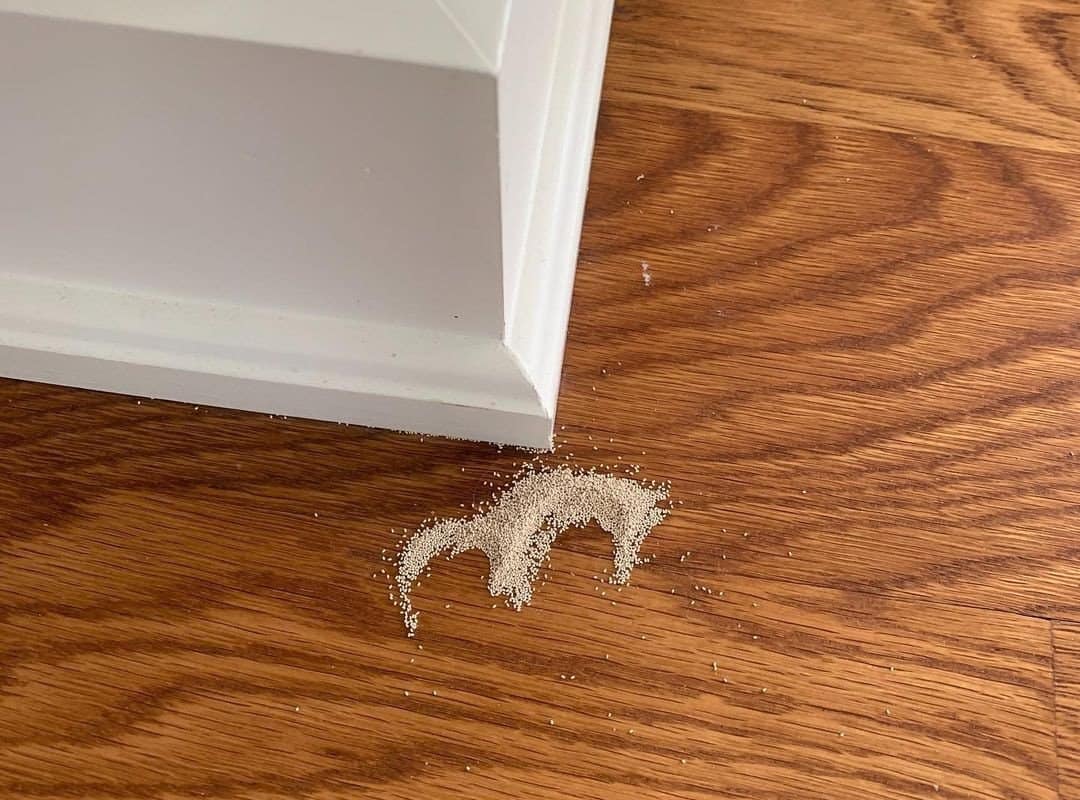
I hope none of you will ever face the termite invasion into your home. As you see, this can be a real catastrophe, so preventing and protecting measures are crucial here. Also, the early infestation detection can help, so monitor your house regularly.
Do not postpone the termite control procedures, as you never know for sure how deep those pests are in the building structural parts.
Now, when you know how to kill drywood termites, you will be able to detect the danger before it is too late. Do you know the horror stories of the massive termite infestation? It sounds like a movie plot, right? Well, tell us about them in the comments!
References:
- Protecting your Home Against Termites (College of Agriculture, Food and Environment):
https://entomology.ca.uky.edu/ef605 - Structural Pest Control Section (North Carolina Department of Agriculture & Consumer Services):https://www.ncagr.gov/SPCAP/structural/pubs/preconstruction.htm
- Termite Control: Answers for Homeowners (College of Agriculture, Food and Environment):
https://entomology.ca.uky.edu/ef604

